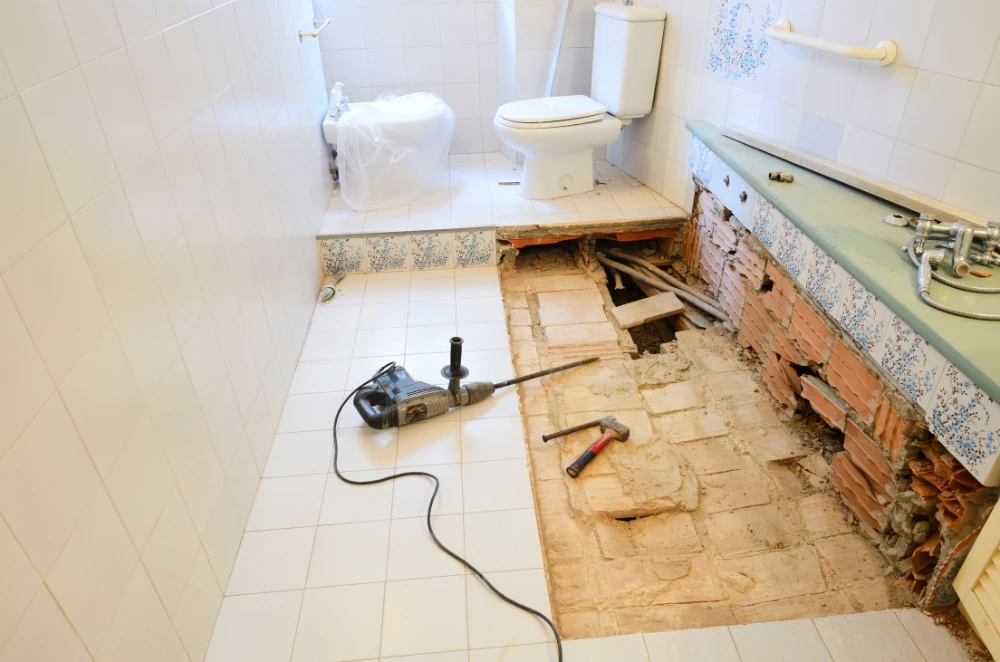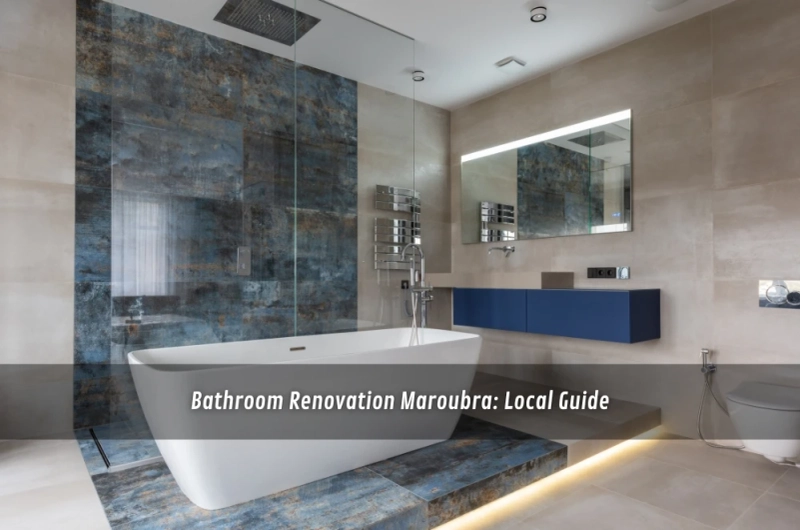Planning a remodel in the 2035 postcode? Good move — a well-designed bathroom adds comfort and real value. To keep things smooth, start by shortlisting a team for Bathroom Renovation Maroubra trusts and then reverse-engineer the plan from your space, budget, and compliance needs. The aim here isn’t a showroom set-piece; it’s a durable, practical room that survives steam, sandy feet, and the odd Monday morning rush.
Nail the brief: Room goals, quirks, and budget bands
Before anyone swings a hammer, get the “why” on paper.
- Users & routines: Who showers when? Do you need twin vanities or a ledge for kids’ bath toys?
- Constraints: Apartments often have fixed risers/vents; houses might allow layout flips.
- Storage & zones: Plan drawers for daily gear; tall cupboards for towels; a niche where shampoo actually lives.
- Budget bands: Group spend into structure (waterproofing, plumbing, electrical), surfaces (tiles, stone, glass), and fixtures (tapware, toilet, vanity). Shifting 5–10% between bands is normal as you refine.
Personal note: In my own terrace reno, a $300 tweak — moving the shower mixer closer to the entrance — stopped the dance where you get drenched turning it on. Tiny change; daily win.
Compliance and licensing made simple
Wet areas need more than pretty tiles. They need certified work that keeps water where it belongs. In NSW, bathroom and laundry renovations are regulated, and certain scopes must be carried out by licensed trades. If your project involves new waterproofing, plumbing, or electrical work, check that your contractor is licensed and that you’ll receive compliance documentation at handover. A helpful primer about bathroom renovation in Sydney Eastern Suburbs.
What to ask for up front:
- Licence details for the builder and relevant trades.
- Who signs the waterproofing certificate and what membrane system they’ll use.
- Whether your apartment strata needs prior approval (common in the Eastern Suburbs).
Waterproofing and ventilation: Where renos live or die
A bathroom is a controlled flood zone. Get these two right.
Waterproofing essentials
- Membrane type: Liquid vs sheet membrane; both can work if installed to spec with correct overlaps up the walls.
- Falls & puddling: Minimum falls to the floor waste keep water moving; check this at the screed stage, not after tiling.
- Penetrations: Taps, mixers, niches, and puddle flanges need careful detailing so the membrane remains continuous.
Ventilation that actually clears steam
- Duct exhaust outside, not into the roof cavity.
- Size the fan for volume and duct length; add a timer run-on (10–20 minutes) so moisture clears after showers.
- Consider a window you’ll actually open — not the one behind a plant you’ll never move.
Anecdote: I inspected a “brand-new” bathroom where the niche leaked into the wardrobe next door. The culprit? Membrane cut short at the niche corners. A $2 brush and an extra 20 minutes would have saved $2,000 in repairs.
Layout logic: Flow, safety and everyday usability
Great layouts feel easy even when you’re half asleep.
- Door swing & sightlines: Avoid a direct toilet view from the hall; pocket doors are magic in tight rooms.
- Shower access: Place the mixer at the entrance, not under the head; step in, turn on, no goosebumps.
- Dry vs wet zones: Keep the vanity in the dry zone where hairdryers live; give the wet zone generous elbow room.
- Future you: Blocking in now for grab rails later costs almost nothing during framing.
Materials that handle Sydney’s humidity and salt air
Eastern Suburbs homes cop ocean air; inner-east terraces cop moisture and limited cross-breeze. Choose accordingly.
- Tiles: Porcelain beats soft ceramics for durability; larger formats reduce grout lines (less to clean). Add anti-slip ratings for floors.
- Grout & sealers: Epoxy grout resists stains/mould; if using cementitious, seal it and choose mid-tone colours that age gracefully.
- Tapware & hardware: Stick with reputable mixers and certified products; cheap cartridges fail when limescale hits.
- Cabinetry: Moisture-resistant substrates, sealed edges, and proper ventilation gaps around integrated basins.
Services detail: Plumbing, electrical and heating
- Plumbing: Re-running pipework for a layout flip can be worth it if it solves daily friction (e.g., tiny shower to a generous walk-in).
- Electrical: RCD-protected circuits, GPO placement where cords won’t drape near water, and mirrors with demisters if condensation is a pain.
- Heating: Towel rails that actually dry towels, and in-slab or under-tile heating for chilly mornings (insulated underlay boosts efficiency).
The build sequence (so you know what “normal” looks like)
- Demolition & protection – Dust control, floor/wall protection to keep the rest of the home liveable.
- Rough-in – Plumbing/electrical plotted to the millimetre; niches framed now, not “we’ll see later.”
- Waterproofing – Primer, membrane coats, curing times logged; photos taken for your records.
- Screed & falls – Set gradients; test with a level and a bucket before tiles go down.
- Tiling – Straight reference lines, even joints, and expansion movement are considered.
- Fit-off – Mixers, rails, shower glass, vanity, toilet; silicone seals neatly tooled.
- Commissioning – Fan tested, hot water balanced, traps checked, and paperwork handed over.
Pro tip: ask your builder for progress photos at key checkpoints (membrane, screed, pre-tile). It keeps everyone honest and gives you a record for warranties.

Cost control without cutting corners
You can reduce spending without risking failure.
- Keep plumbing points close unless a layout change solves a daily problem.
- Select a hero material (feature tile or stone) and keep the rest simple.
- Use standard shower screens if custom curves/angles don’t add real value.
- Order lead-time items early (vanities, mirrors, specialty tiles) to avoid project pauses.
If you’re price-planning future content, queue up budget bathroom renovations in the Eastern Suburbs, a natural next read that breaks down allowances and contingencies.
Small bathrooms: Tricks that feel bigger
- Light layering: Overhead + task lighting at the mirror; dimmable where possible.
- Mirrors: High and wide beats tall and skinny; bounced light makes rooms feel larger.
- Storage: Wall-hung vanities free up floor space and improve cleanability; mirrored shaving cabinets hide daily clutter.
- Colour & grout: Lighter walls, continuous floor tiling, and aligned grout lines “stretch” the space.
Thinking about a compact second bathroom? Research an ensuite renovation specialist for layouts that make tiny footprints functional.
Handover and aftercare: Protect the investment
- Paperwork: Warranty info, product manuals, tile/stone care sheets, and your waterproofing certificate stored together.
- First month: Use exhaust fans after every shower (timer run-on helps); squeegee glass to reduce mineral spots.
- Maintenance: Inspect silicone annually, re-seal stone as specified, and keep weep holes clear at shower bases.
Real-world fix: A Maroubra client battled lingering steam even with a new fan. We upsized the duct and added a 15-minute run-on timer. Problem solved without touching the finishes.
Your quick renovation checklist
- Clear brief with must-haves vs nice-to-haves
- Licensed builder/trades and documented waterproofing
- Exhaust to outside; fan-sized and on a run-on timer
- Materials suited to humidity; grout/seal strategy locked
- Progress photos at membrane/screed/tiling stages
- Practical storage and a safe, non-slip floor choice
- Handover pack and care plan
Final word
A great bathroom is a system: layout, waterproofing, ventilation, and materials working together. Choose a licensed team, lock the details early, and keep one eye on daily usability. If you want a benchmark as you plan, review the scope from Bathroom Renovation in Maroubra and keep NSW’s guidance on bathroom renovation in the Eastern suburbs handy while you compare quotes.


